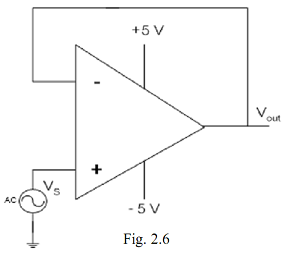Reference no: EM131265516
1. After a significant f-test has been obtained for repeated measures ANOVA, the null hypothesis is _______.
A) rejected.
B) not rejected.
C) updated.
D) reevaluated.
2. A common situation that can occur with the use of repeated measures is referred to as
A) false positive.
B) carryover effect.
C) false negative.
D) post hoc effect.
3. ANCOVA allows us to assess the differences in group means while controlling for other variables. The reason(s) why it is useful to control for other variables is/are it
A) adjusts for confounders.
B) increases statistical power.
C) reduces the error variance.
D) All of the Above
4. ANCOVA is different from one-way ANOVA in that
A) ANCOVA has more than one dependent variable.
B) ANCOVA allows you to adjust for continuous covariates.
C) ANCOVA must have a continuous and normally distributed dependent variable.
D) ANCOVA does not address hypotheses about differences in means.
5. How would you interpret a correlation coefficient of -1?
A) Strong positive correlation-as one variable increases, so does the other
B) Weak negative correlation-as one variable increases, the other variable decreases slightly
C) No correlation at all
D) Perfect negative correlation-as one variable increases, the other variable decreases
6. You are conducting a study and want to look at the correlation between the average number of green vegetables consumed per week and a number of health-related biomarkers (eg, cholesterol, triglycerides, glucose). Based on the histogram for the green vegetable consumption variable, which of the following correlations would be the most appropriate? (Select all that apply.)

A) Pearson correlation
B) Spearman correlation
C) Phi
D) Point-Biserial
E) Kendall's Tau
F) Contingency coefficient
7. A survey was conducted among women age 40 to 60 in which participants were asked how many hours per week they spent exercising, on average. This information was correlated with the women's body mass index (BMI). The SPSS results are below. What conclusions can you draw?
|
Correlations
|
|
|
Exercise Mean hours per week exercising
|
BMI Body Mass Index
|
|
Exercise Mean hours per week exercising
|
Pearson Correlation
|
1
|
- 0.015
|
|
|
Sig. (2-tailed)
|
|
0.812
|
|
|
N
|
250
|
250
|
|
BMI Body Mass Index
|
Pearson Correlation
|
- 0.015
|
1
|
|
|
Sig. (2-tailed)
|
0.812
|
|
|
|
N
|
250
|
250
|
A) There is a strong, statistically significant positive correlation between mean hours exercised and BMI.
B) There is a weak, non-significant negative correlation between mean hours exercised and BMI.
C) There is a strong, non-significant negative correlation between mean hours exercised and BMI.
D) There is a non-significant positive correlation between mean hours exercised and BMI.
8. A cross-sectional study among older adults (>65 years old) looked at the association of exposure to second hand smoke in the home with chronic obstructive pulmonary disease (COPD) and found an odds ratio of 1.9. How would you interpret these results?
A) The odds of having COPD among those exposed to second hand smoke is 1.9 times lower than that of those not exposed to second hand smoke.
B) The odds of having COPD among those exposed to second hand smoke is significantly higher than that of those NOT exposed to second hand smoke.
C) The odds of having COPD among those exposed to second hand smoke is 1.9 times higher than that of those NOT exposed to second hand smoke.
D) The odds of having COPD is essentially the same among those exposed to second hand smoke and those not exposed.
9. A case-control study was conducted looking at the association between pet ownership and adult-onset asthma. Because environment during childhood is thought to have an impact on the risk for allergy and asthma, the study used siblings without asthma as matched controls and compared the probability of current pet ownership in the newly diagnosed asthmatic sibling to that of the non asthmatic sibling. Which of the following tests should be used to calculate the p-value for this association?
A) Fisher's exact
B) Chi-square test
C) McNemar's test
D) Yate's continuity correction
10. Under which of the following conditions would you need to use the Fisher's exact test instead of the chi-square test?
A) The two variables are normally distributed.
B) One or more expected cell counts are less than 5.
C) The groups are not independent (eg, twin or matched case-control studies).
D) There are outliers.
SPSS Problem
Following are the cumulative number of AIDS cases reported for Neptune County through December 31, 2008, broken down by ethnicity:
|
Ethnicity
|
Number of Cases
|
|
White
|
751
|
|
Hispanic
|
225
|
|
African-American
|
100
|
|
Asian, Pacific Islander
|
36
|
|
Native American
|
5
|
|
|
Total = 1117
|
|
Ethnicity
|
Percentage of total county population
|
|
White
|
51
|
|
Hispanic
|
23
|
|
African-American
|
4
|
|
Asian, Pacific Islander
|
21
|
|
Native American
|
1.0
|
|
|
Total = 100%
|
Perform a goodness-of-fit test to determine whether the make-up of AIDS cases follows the ethnicity of the general population of Neptune County. State the following:
1. Null Hypothesis
2. Decision
3. Reason for the Decision
4. Does it appear that the pattern of AIDS cases in Neptune County corresponds to the distribution of ethnic groups in this county? Why or why not?
5. You are asked to report your findings along with recommendations for prioritizing interventions by ethnic group to the County Health Commission. Write a one paragraph handout summarizing the findings and your recommendations.
Attachment:- Assignment.rar